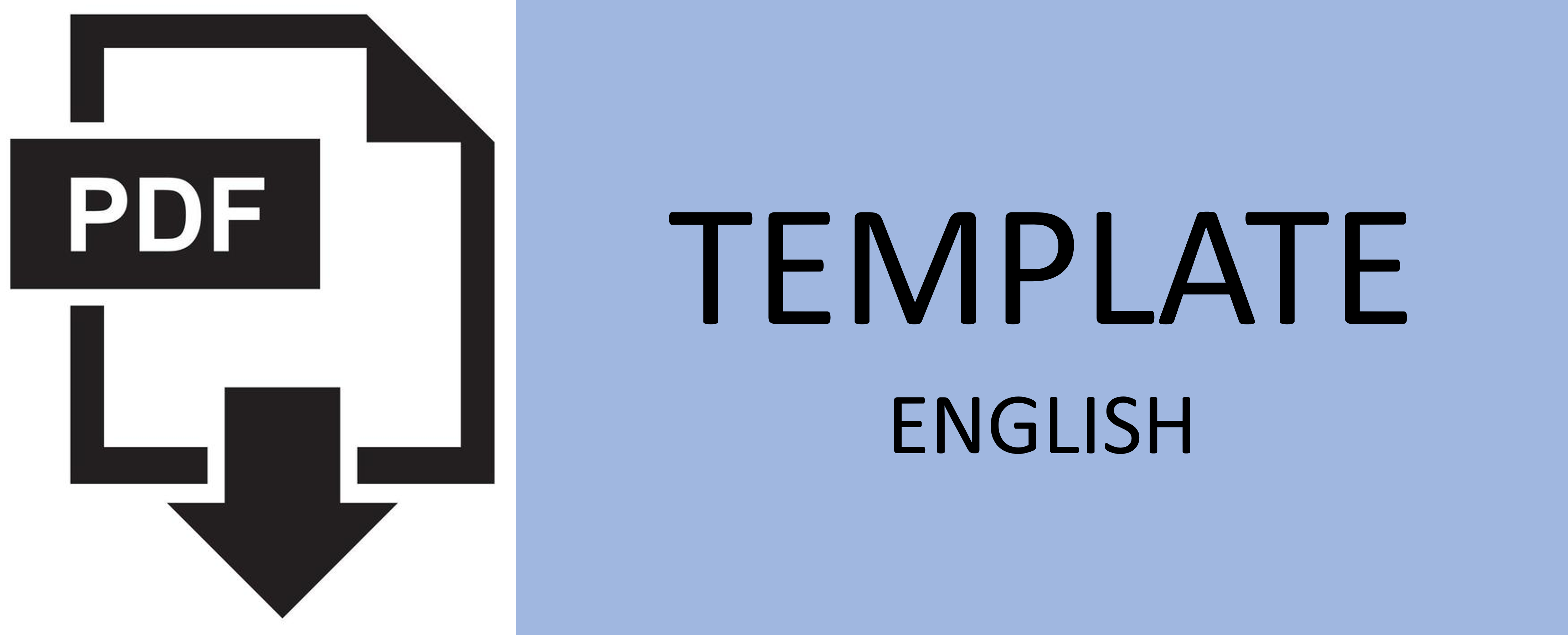Environmental Social Governance (ESG) Framework for Public Private Partnership (PPP) in Indonesia
Abstract
Environmental and social risks are risks that can disrupt the sustainability of infrastructure provision through the PPP scheme. PPP is a cooperation scheme involving many stakeholders and each stakeholder can be part of mitigating risks, including environmental risks. Environmental risk mitigation can be carried out through instruments and frameworks owned by each stakeholder. This research aims to map the ESG framework that exists in PPP schemes in Indonesia based on existing instruments for stakeholders to be able to make ESG an effective instrument for mitigating environmental and social risks. The research method used in this research is qualitative because the analysis used in this research is a descriptive and in-depth observation of the PPP ecosystem in Indonesia. The results of this research show that there are eight stakeholders in PPP in Indonesia. Each stakeholder has an instrument and can apply the ESG framework based on the instrument they have. Implementing the ESG framework can mitigate environmental and social risks in business processes carried out by stakeholders in the PPP ecosystem in Indonesia.
Keywords
Full Text:
PDFReferences
Hermawan, P. F. Marzuki, M. Abduh, and R. Driejana, “The Sustainable Infrastructure through the Construction Supply Chain Carbon Footprint Approach,” Procedia Engineering, vol. 171, pp. 312–322, 2017, doi: https://doi.org/10.1016/j.proeng.2017.01.339.
Puji Kamulyan, I Putu Artama Wiguna, and Agus Slamet, “Penilaian Keberlanjutan Pengelolaan Sistem Penyediaan Air Minum Berbasis Masyarakat Di Kota Blitar,” Journal of Civil Engineering, vol. 32, no. 2, pp. 60–60, Nov. 2017, doi: https://doi.org/10.12962/j20861206.v32i2.4559.
C. Widiasmoro, H. Suprayitno, and E. B. Santoso, “Analisis Penentuan Kepentingan Jalan Poros Kabupaten Antar Kecamatan Di Kabupaten Trenggalek Untuk Mendukung Pengembangan Wilayah,” Journal of Civil Engineering, vol. 33, no. 2, p. 86, Nov. 2018, doi: https://doi.org/10.12962/j20861206.v33i2.4571.
M. Ren, T. Zhou, D. Wang, and C. Wang, “Does Environmental Regulation Promote the Infrastructure Investment Efficiency? Analysis Based on the Spatial Effects,” International Journal of Environmental Research and Public Health, vol. 20, no. 4, p. 2960, Feb. 2023, doi: https://doi.org/10.3390/ijerph20042960.
Y. Liu, P. Poulová, Pavel Pražák, F. Ullah, and Solomon Prince Nathaniel, “Infrastructure development, human development index, and CO2 emissions in China: A quantile regression approach,” Frontiers in Environmental Science, vol. 11, Jan. 2023, doi: https://doi.org/10.3389/fenvs.2023.1114977.
Nora Eka Putri, None Helmi, M. Noer, and None Yossyafra, “Socio-ecological Risk Mitigation in the Construction of the Sicincin-Padang Toll Road, West Sumatra,” IOP Conference Series: Earth and Environmental Science, vol. 1098, no. 1, pp. 012068–012068, Oct. 2022, doi: https://doi.org/10.1088/1755-1315/1098/1/012068.
World Economic Forum, “The Global Risks Report 2023 18th Edition,” Jan. 2023. Available: https://www3.weforum.org/docs/WEF_Global_Risks_Report_2023.pdf
R. Newman and I. Noy, “The global costs of extreme weather that are attributable to climate change,” Nature Communications, vol. 14, no. 1, p. 6103, Sep. 2023, doi: https://doi.org/10.1038/s41467-023-41888-1.
S. Eberenz, D. Stocker, T. Röösli, and D. N. Bresch, “Asset exposure data for global physical risk assessment,” Earth System Science Data, vol. 12, no. 2, pp. 817–833, Apr. 2020, doi: https://doi.org/10.5194/essd-12-817-2020.
N. P. Simpson et al., “A framework for complex climate change risk assessment,” One Earth, vol. 4, no. 4, pp. 489–501, Apr. 2021, doi: https://doi.org/10.1016/j.oneear.2021.03.005.
L. Woetzel, D. Pinner, H. Samandari, H. Engel, M. Krishnan, B. Boland, and C. Powis, “Climate risk and response: Physical hazards and socioeconomic impacts”, McKinsey & Company, Jan. 16, 2020. Retrieve from: https://www.mckinsey.com/business-functions/sustainability/our-insights/climate-risk-and-response-physical-hazards-and-socioeconomic-impacts
Y.M.A. Wardhana, Hendro H., Fandy P.A et. al, in “Skema pembiayaan kreatif dan inovatif: Sustainable finance untuk akselerasi pembangunan infrastruktur,” Jakarta: LPDP, IIGF Institute, PT PII dan Mata Garuda, pp 3-18, 2023.
G. Castelblanco, J. Guevara, D. Rojas, J. Correa, and Koen Verhoest, “Environmental Impact Assessment Effectiveness in Public–Private Partnerships: Study on the Colombian Toll Road Program,” vol. 39, no. 2, Mar. 2023, doi: https://doi.org/10.1061/jmenea.meeng-5015.
C. Baah et al., “Examining the correlations between stakeholder pressures, green production practices, firm reputation, environmental and financial performance: Evidence from manufacturing SMEs,” Sustainable Production and Consumption, vol. 27, pp. 100-114, July 2021, doi: https://doi.org/10.1016/j.spc.2020.10.015.
P. Martin, Zeinab Elbeltagy, Zenathan Hasannudin, and M. Abe, “Factors Affecting the Environmental and Social Risk Management of Financial Institutions in Selected Asia-Pacific Developing Countries,” United Nations ESCAP, Macroeconomic Policy and Financing for Development Division, Mar. 2021.
Industry for tomorrow: towards esg implementation in Indonesia Industry for Tomorrow: towards ESG implementation in Indonesia, Mandiri Institute, 2022. Available: https://bankmandiri.co.id/documents/20143/45659490/ESG+Book+Report+-+Mandiri+Institute.pdf/ca9a1803-b7aa-86be-5dec-c7f64a329245?t=1667449544435.
Georg Inderst and Fiona Stewart, “Incorporating Environmental, Social and Governance Factors into Fixed Income Investment,” World Bank Group Publication, Apr. 2018.
M. A. van Eldik, F. Vahdatikhaki, J. M. O. dos Santos, M. Visser, and A. Doree, “BIM-based environmental impact assessment for infrastructure design projects,” Automation in Construction, vol. 120, p. 103379, Dec. 2020, doi: https://doi.org/10.1016/j.autcon.2020.103379
W. Jinglei, D. Guan, Z. Zhang, D. Chen, and D. Guan, “Carbon footprints of the equity portfolios of Chinese fund firms,” Communications Earth & Environment, vol. 4, no. 1, Aug. 2023, doi: https://doi.org/10.1038/s43247-023-00926-y.
H. Tabari and P. Willems, “Sustainable development substantially reduces the risk of future drought impacts,” Communications Earth & Environment, vol. 4, no. 180, pp. 1–10, May 2023, doi: https://doi.org/10.1038/s43247-023-00840-3.
A. Baratta, A. Cimino, F. Longo, V. Solina, and S. Verteramo, “The Impact of ESG Practices in Industry with a Focus on Carbon Emissions: Insights and Future Perspectives,” Sustainability, vol. 15, no. 8, p. 6685, Jan. 2023, doi: https://doi.org/10.3390/su15086685.
Xia Qi, B. Wang, and Q. Gao, “Environment, social and governance research of infrastructure investment: A literature review,” Journal of Cleaner Production, vol. 425, pp. 139030, Nov. 2023, doi: https://doi.org/10.1016/j.jclepro.2023.139030.
D. Kiose and S. Keen, “Understanding the Relationships between Environmental and Social Risk Factors and Financial Performance of Global Infrastructure Projects,” iBusiness, vol. 09, no. 04, pp. 80–100, Dec. 2017, doi: https://doi.org/10.4236/ib.2017.94007.
R. Krishnamoorthy, “Environmental, Social, and Governance (ESG) Investing: Doing Good to Do Well,” Open Journal of Social Sciences, vol. 09, no. 07, pp. 189–197, July 2021, doi: https://doi.org/10.4236/jss.2021.97013.
Gabriella Alodia Jovita, “Impact of ESG Implementation on Financial Performance and Capital Structure,” Jurnal Informatika Ekonomi Bisnis, vol. 5, no. 4, pp. 1480–1486, Dec. 2023, doi: https://doi.org/10.37034/infeb.v5i4.778.
S. Khodijah, “The Influence of Environmental, Social, and Governance Performance on Foreign Investment,” Journal of Accounting and Investment, vol. 24, no. 1, pp. 64–83, Oct. 2022, doi: https://doi.org/10.18196/jai.v24i1.16033.
T. Ehlers, U. Elsenhuber, K. Jegarasasingam, and E. Jondeau, “Deconstructing ESG Scores: How to Invest with your own Criteria?,” IMF Working Papers, vol. 2023, no. 057, Mar. 2023, doi: https://doi.org/10.5089/9798400235283.001.A001.
R. M. A. Zahid, A. Saleem, and U. S. Maqsood, “ESG performance, capital financing decisions, and audit quality: empirical evidence from Chinese state-owned enterprises,” Environmental Science and Pollution Research, vol. 30, no. 15, pp. 44086–44099, Jan. 2023, doi: https://doi.org/10.1007/s11356-023-25345-6.
E. P. Setiani, “The Impact of ESG Scores on Corporate Financial Performance: Moderating Role of Gender Diversity,” Nominal Barometer Riset Akuntansi dan Manajemen, vol. 12, no. 1, pp. 128–139, Apr. 2023, doi: https://doi.org/10.21831/nominal.v12i1.59778.
R. Almeyda and A. Darmansya, “The Influence of Environmental, Social, and Governance (ESG) Disclosure on Firm Financial Performance,” IPTEK Journal of Proceedings Series, no. 5, p. 278, Dec. 2019.
J. Wang, L. Wang, and X. Qian, “Revisiting firm innovation and environmental performance: New evidence from Japanese firm-level data,” Journal of Cleaner Production, vol. 281, p. 124446, Jan. 2021, doi: https://doi.org/10.1016/j.jclepro.2020.124446
E. Escrig-Olmedo, J. M. Rivera-Lirio, M. J. Muñoz-Torres, and M. Á. Fernández-Izquierdo, “Integrating multiple ESG investors’ preferences into sustainable investment: A fuzzy multicriteria methodological approach,” Journal of Cleaner Production, vol. 162, pp. 1334–1345, Sep. 2017, doi: https://doi.org/10.1016/j.jclepro.2017.06.143
E. F. Fama, “Contract costs, stakeholder capitalism, and ESG,” European Financial Management, vol. 27, no. 2, Nov. 2020, doi: https://doi.org/10.1111/eufm.12297.
F. Campanella, L. Serino, A. Crisci, and A. D’Ambra, “The role of corporate governance in environmental policy disclosure and sustainable development. Generalized estimating equations in longitudinal count data analysis.,” Corporate Social Responsibility and Environmental Management, vol. 28, no. 1, pp. 474–484, Oct. 2020, doi: https://doi.org/10.1002/csr.2062
S. R. Fiskerstrand, S. Fjeldavli, T. Leirvik, Y. Antoniuk, and O. Nenadić, “Sustainable investments in the Norwegian stock market,” Journal of Sustainable Finance & Investment, vol. 10, no. 3, pp. 1–17, Oct. 2019, doi: https://doi.org/10.1080/20430795.2019.1677441.
J. Veldman and G. Gaalman, “On the design of managerial incentives for sustainability investments in the presence of competitors,” Journal of Cleaner Production, vol. 258, p. 120925, June 2020, doi: https://doi.org/10.1016/j.jclepro.2020.120925.
Z. Cheng, H. Wang, W. Xiong, D. Zhu, and L. Cheng, “Public–private partnership as a driver of sustainable development: toward a conceptual framework of sustainability-oriented PPP,” Environment, Development and Sustainability, vol. 23, pp. 1043–1063, Jan. 2020, doi: https://doi.org/10.1007/s10668-019-00576-1.
J. Węgrzyn, “The Perception of Critical Success Factors for PPP Projects in Different Stakeholder Groups,” Entrepreneurial Business and Economics Review, vol. 4, no. 2, pp. 81–92, June 2016, doi: https://doi.org/10.15678/eber.2016.040207
J. Węgrzyn and A. Wojewnik-Filipkowska, “Stakeholder Analysis and Their Attitude towards PPP Success,” Sustainability, vol. 14, no. 3, p. 1570, Jan. 2022, doi: https://doi.org/10.3390/su14031570.
Y. N. Sanda, N. A. Anigbogu, Y. D. Izam, and L. Y. Nuhu, “Managing Stakeholder Opportunism in Public-Private Partnership (PPP) Housing Projects,” Journal of Construction in Developing Countries, vol. 27, no. 1, pp. 213–228, Jun. 2022, doi: https://doi.org/10.21315/jcdc2022.27.1.12
S. K. Kaharuddin, H. Adnan, and H. E. A. Baharuddin, “success factors for stakeholder management for public-private partnerships infrastructure projects,” Built Environment Journal, vol. 17, no. 2, p. 1, July 2020.
P. D’Orazio and L. Popoyan, “Fostering green investments and tackling climate-related financial risks: Which role for macroprudential policies?,” Ecological Economics, vol. 160, pp. 25–37, Jun. 2019, doi: https://doi.org/10.1016/j.ecolecon.2019.01.029.
S. Y. Kim and L. D. Thuc, “Sustainable Location Selection for Investing in Public–Private Partnership Infrastructure Projects: From a Developing Country’s Perspective,” Sustainability, vol. 12, no. 15, p. 5914, Jul. 2020, doi: https://doi.org/10.3390/su12155914.
DOI: http://dx.doi.org/10.12962%2Fj20861206.v39i1.19620
Refbacks
- There are currently no refbacks.

Journal of Civil Engineering is licensed under a Creative Commons Attribution-ShareAlike 4.0 International License.







.jpg)